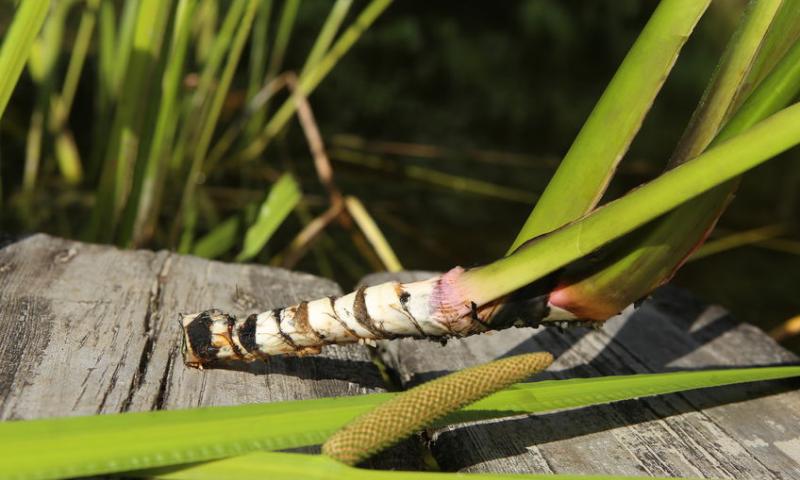 />
/>
COMMON NAME: Calamus
BOTANICAL NAME: Acorus Calamus
CHINESE NAME: Shui Chang Pu
ORIGIN: India, North America
HABITAT: Calamus is common in Europe, the Caucasus, India, China, Japan, and North America. It grows along the rivers and ponds banks, in swamps and marshy meadows.
BOTANICAL INFORMATION: Calamus is a perennial herb up to 60-100 cm height. The rhizome is thick, cylindrical, sinuous, covered on top with dark, broad leafy scars. The rhizome is located horizontally, almost on the surface, reaches a length of up to 1.5 m. Calamus roots are thin, fibrous and located in nodes. The rhizome and other parts of the plant have a specific strong odor. The stem is upright, unbranched, oblate, grooved on one side, and sharp-faced on the other. Leaves are sword-shaped. The flowers are small, green-yellow, gathered in the cob. The plant blooms in May – July. The fruit is a leathery, multi-seeded red berry.
CHEMICAL COMPOSITION: Calamus rhizomes contain up to 3% of essential oil, which consists of monoterpenes (camphene, camphor, borneol) and sesquiterpenes (acorin, isoacoron, acoroxide), aromatic compounds (azarone, eugenol).
In addition to the essential oil, it contains tannins, saponins, ascorbic and palmitic acids, choline, vitamins and minerals, such as zinc, potassium, phosphorus. The smell of rhizomes is caused by asaraldehyde.
INTERESTING FACTS ABOUT CALAMUS:
The name of the plant comes from the Greek word "akorus", which means "plant with a fragrant root."
For a long time the plant was endowed with magical power, the roots were dried, set on fire and used in mystical rituals.
The Indians of the Titon-Dakota tribe chewed powder of the Calamus rhizomes before the battle, and rubbed their face with an amber paste.
In Great Britain, the leaves of Calamus were used in houses and churches,as a fragrant floor covering.
*This article is for informational purposes only. We suggest consulting a physician before using these or any other herbal supplements.
